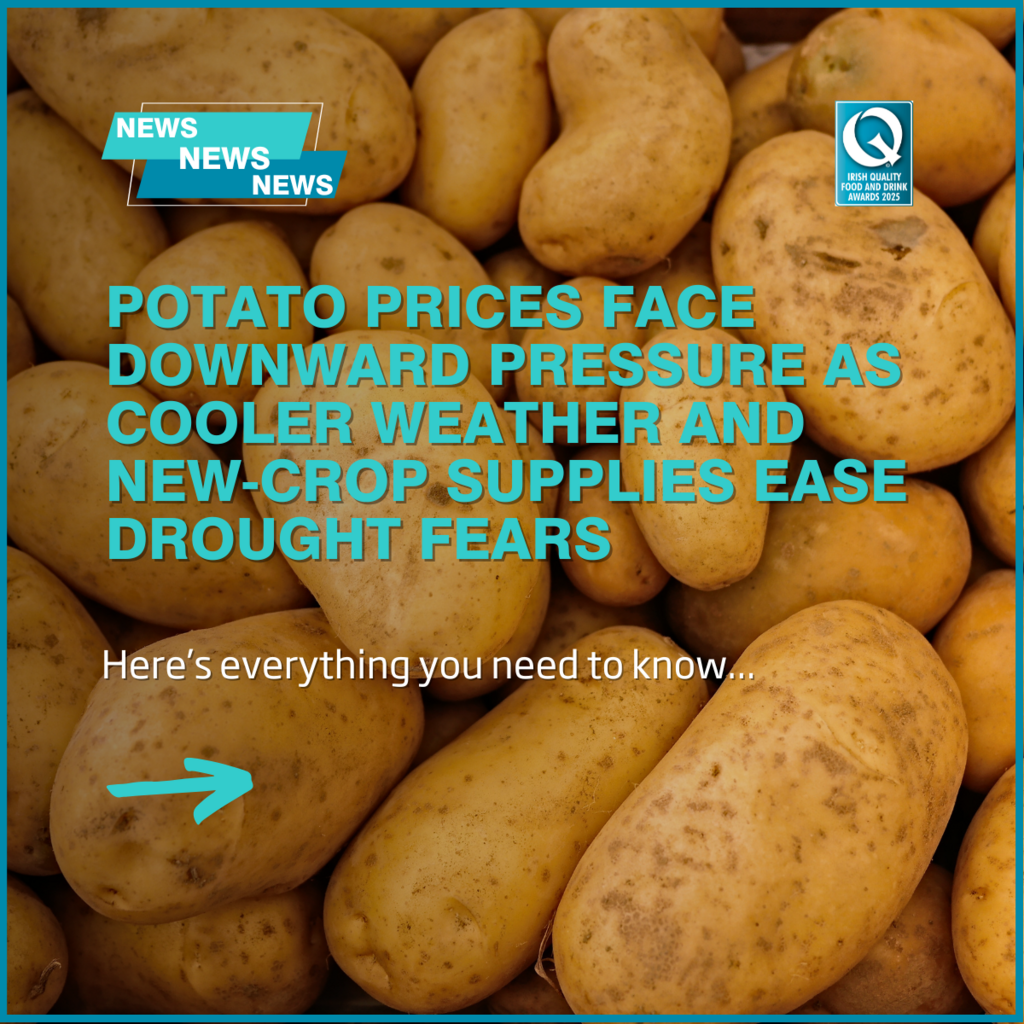
Potato prices face downward pressure as cooler weather and new‑crop supplies ease drought fears
The Irish Farmers’ Association warns that fresh maincrop volumes and recent rains across parts of Europe have eased drought concerns and could push wholesale and retail potato prices lower, though quality issues and pockets of ongoing dryness leave the harvest outlook uncertain.
The Irish Farmers’ Association has warned that potato prices are coming under pressure as maincrop harvesting gets under way, after a run of cooler weather and regular showers across parts of mainland Europe eased earlier drought fears. The IFA said the changed weather outlook — which has improved field conditions in several producing countries — coincides with new‑season supplies reaching the market, a combination that risks pushing wholesale and retail prices downward as summer harvesting gathers pace. The association made these observations in its market report published in early August.
In Ireland the IFA reported that domestic sales and consumption were largely unchanged last week but that crops are more advanced than usual: “crops are more advanced this year and many will be ready for desiccation before the end of the month,” the IFA said in its 5 August market note. The report added that desiccation options are constrained by a limited range of chemistry now available to growers, while widespread reports of tuber cracking — which the IFA linked to drought earlier in the season — mean quality and pack‑out remain uncertain until more of the harvest is lifted.
The processing sector is already beginning to take new crop volumes, the IFA said, but several factories are still working through old contracted stocks of varieties such as Markies and Fontane and this carryover could keep processing lines supplied well into August. First new‑crop Marfona was seen on the market at the start of the month, and uptake of fresh material is growing; yet operators and buyers remain selective for top quality, a factor that will determine how rapidly older inventories are run down.
Those domestic signals sit alongside a mixed European drought picture. The European Commission’s Joint Research Centre maps show recovery in swathes of western and parts of central Europe following recent precipitation, while warning and alert conditions persist in other areas — notably the south‑eastern Mediterranean and parts of eastern Europe. Market intelligence providers have also noted that recent rains across key production zones from France to the Netherlands have eased drought stress and improved field conditions, helping new‑season availability.
Price data and market commentary from the UK underline how quickly sentiment can shift when supply and demand come back into balance. Trade reporting last week highlighted sharp month‑on‑month declines for benchmark packing varieties, with FreshPlaza citing Mintec/Expana figures that showed substantial drops for Maris Piper and white‑pack lines. Traders told reporters that softening demand, abundant contracted volumes and the presence of carryover stocks have all weighed on prices — though many also warned that a return to drier conditions would tighten the picture for the 2025/26 marketing year and could reverse the current downwards momentum.
Seed production remains a particular bright spot in northern Britain. Scottish seed crops have generally fared well this season, supporting export opportunities and the supply of disease‑free planting material, industry sources said. Scotland’s seed sector has been actively seeking to rebuild and expand outlets, including efforts to regain access to mainland EU markets and to develop new destinations beyond its long‑standing customers in North Africa and the Middle East. Nonetheless, growers continue to navigate regulatory headwinds stemming from post‑Brexit plant‑health rules.
For now the outlook is one of cautious watchfulness. As one industry observer told HortNews, “Industry analysts will be closely watching how the arrival of fresh supply impacts wholesale and retail pricing dynamics.” If new‑crop volumes prove abundant and quality issues are limited, the summer harvest could sustain downward pressure on prices; conversely, any renewed spell of dryness or unexpected quality losses would tighten availability and support firmer prices. Traders, processors and growers will therefore be tracking weather updates, official drought maps and early harvest reports closely as the maincrop lift progresses.
